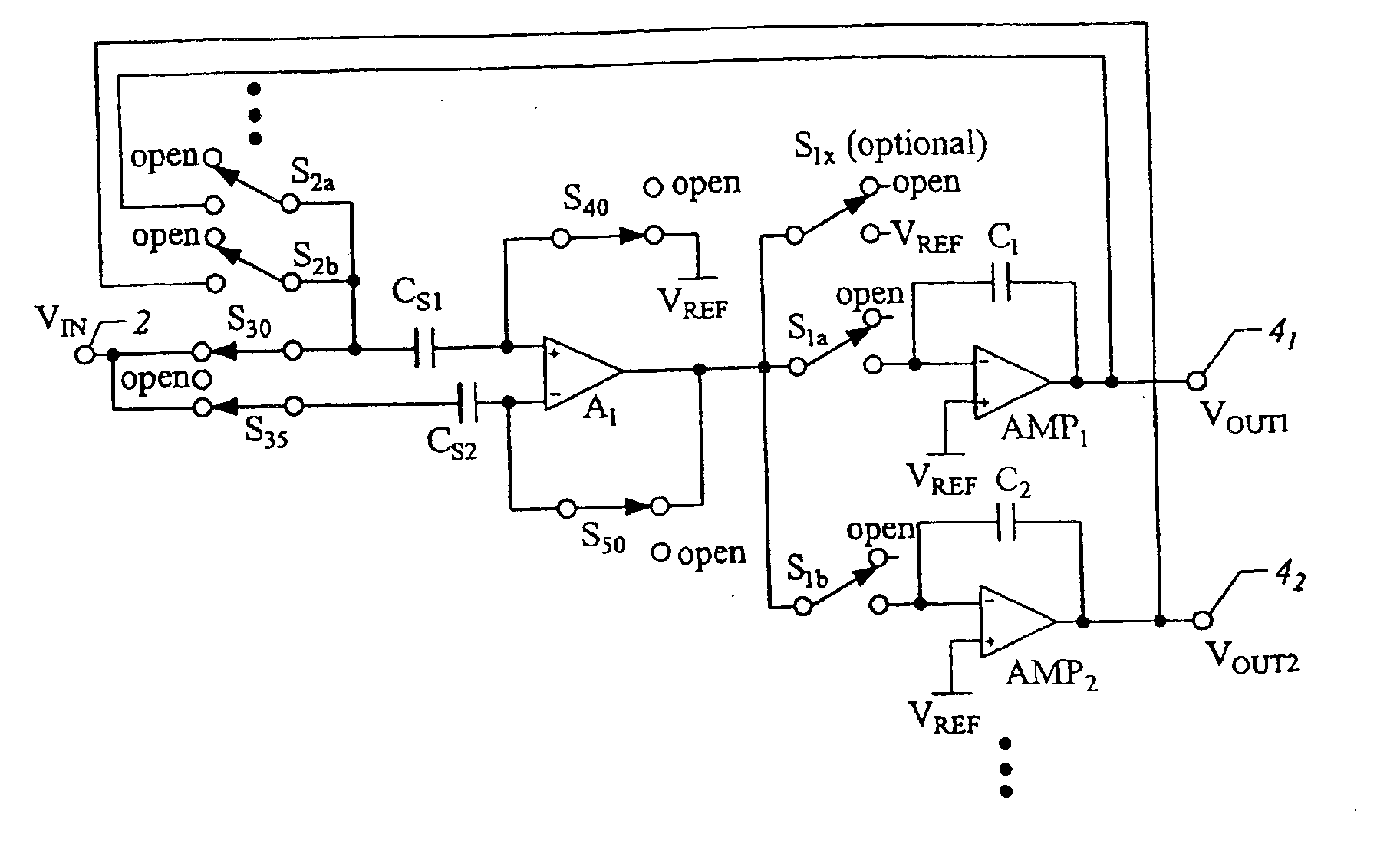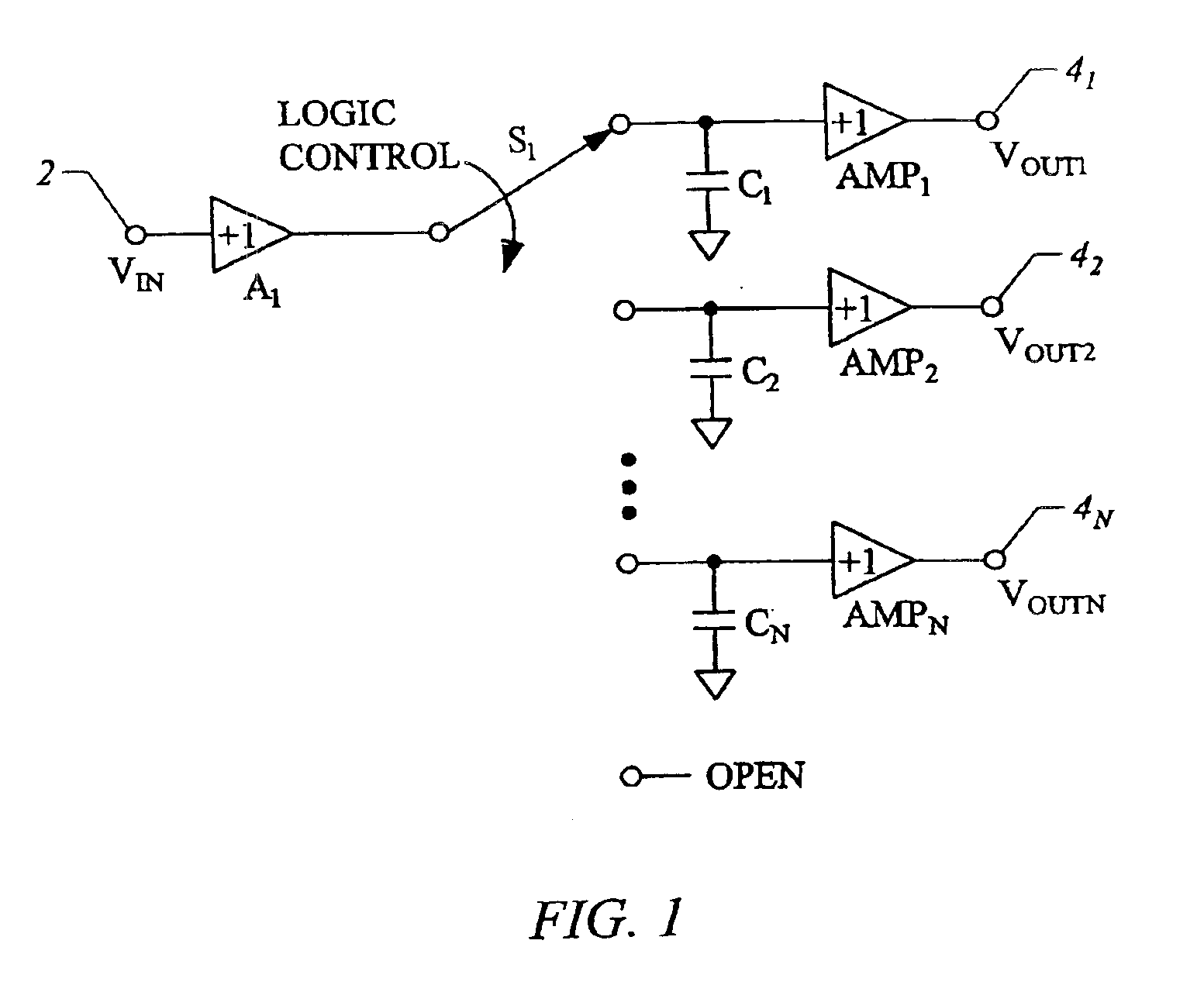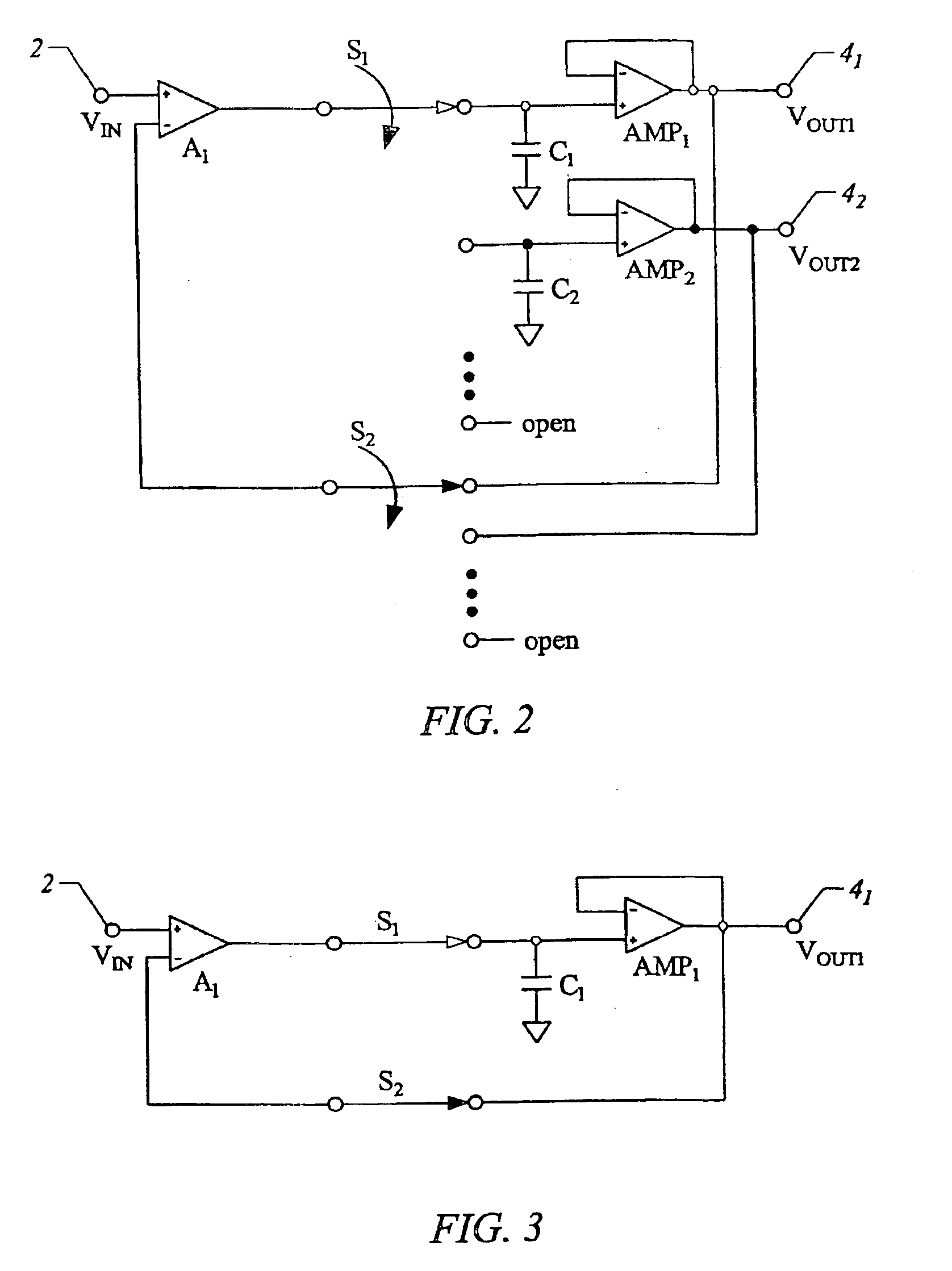Analog demultiplexer
a multi-channel, analog technology, applied in the direction of pulse technique, instrument, color signal processing circuit, etc., can solve problems such as unsatisfactory effects, and achieve the effect of improving switching speed
- Summary
- Abstract
- Description
- Claims
- Application Information
AI Technical Summary
Benefits of technology
Problems solved by technology
Method used
Image
Examples
Embodiment Construction
[0058]An approach for an analog demultiplexer in accordance with the present invention is shown in FIG. 6. Using this circuit and switching S1a, S1b . . . etc. and S2a, S2b . . . etc., control logic can guide VIN to be sampled and held on a specific one of the output buffers AMP1-AMPN. Note that FIG. 6 shows use of multiple switches S1a, S1b . . . etc. and S2a, S2b . . . etc., as an alternative, a single switch could be used for all of switches S1a, S1b . . . etc. or S2a, S2b . . . etc. However, use of multiple switches permits the input amplifier A1 to be connected to more than one of the output amplifiers AMP1-AMPN at one time. Further note that although switches such as S1a and S2a typically open and close together simultaneously in prior art designs, in the present invention the switches may or may not close simultaneously.
[0059]For a description of operation, to simplify the system of FIG. 6, FIG. 7 is included showing only two amplifiers, assuming VIN is to be sampled to an ou...
PUM
 Login to View More
Login to View More Abstract
Description
Claims
Application Information
 Login to View More
Login to View More - R&D
- Intellectual Property
- Life Sciences
- Materials
- Tech Scout
- Unparalleled Data Quality
- Higher Quality Content
- 60% Fewer Hallucinations
Browse by: Latest US Patents, China's latest patents, Technical Efficacy Thesaurus, Application Domain, Technology Topic, Popular Technical Reports.
© 2025 PatSnap. All rights reserved.Legal|Privacy policy|Modern Slavery Act Transparency Statement|Sitemap|About US| Contact US: help@patsnap.com



